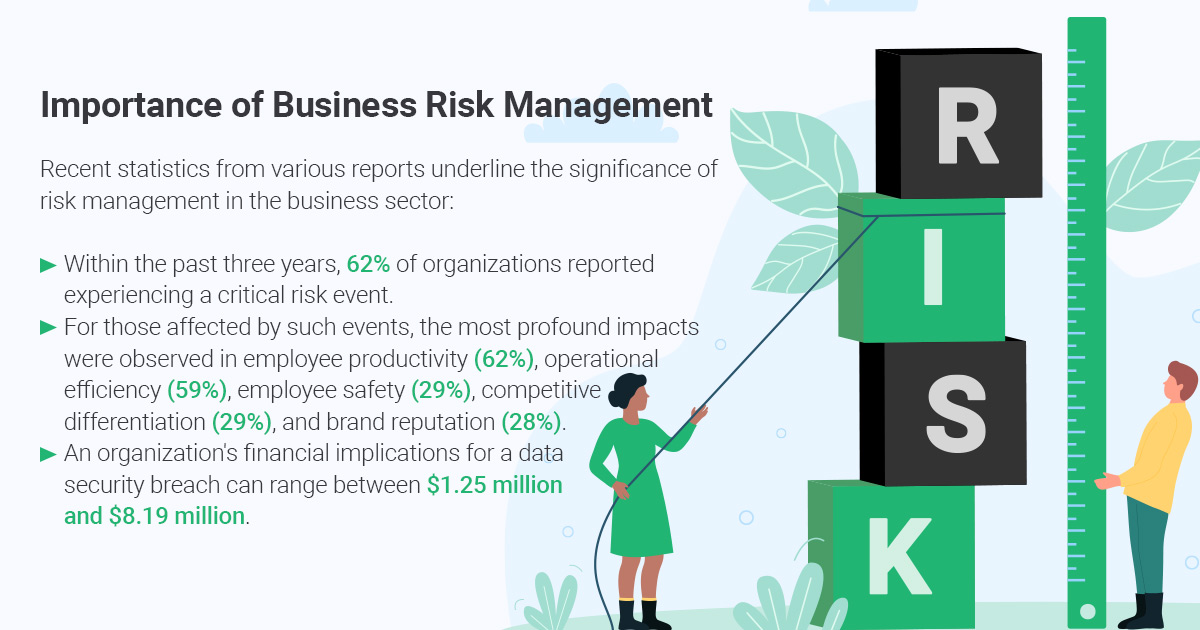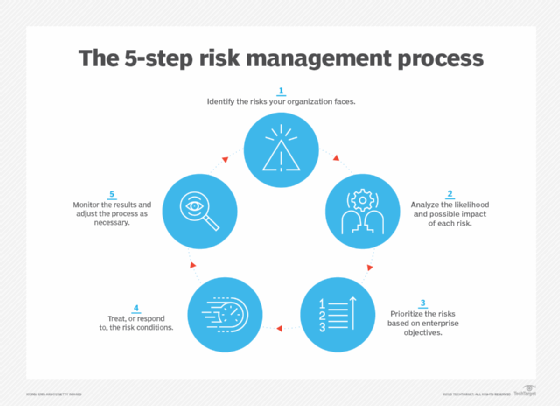The Impact of the Importance of Risk Management on Corporate Governance
The Impact of the Importance of Risk Management on Corporate Governance
Blog Article
The Critical Relevance of Risk Management in Getting Organizational Objectives
This is where Risk Management steps in, offering a structured method to determining, assessing, and mitigating prospective obstructions to advance. As we discover the essential role of Risk Management in attaining business objectives, one can not ask yourself however assist: exactly how does this convert into real-world success?
Comprehending the Idea of Risk Management in Organization

The Indispensable Duty of Risk Management in Strategic Planning
Integrating Risk Management right into tactical preparation works as a safeguard for organizations, anchoring their long-term strategies with a strong foundation of readiness and resilience. It runs as the company's radar, discovering prospective dangers and vulnerabilities that can interfere with the path towards achieving their mentioned objectives. Risk Management provides a framework for preparing for uncertainties and designing appropriate feedbacks, making certain the organization's survival and success even when faced with difficulty. By including Risk Management into strategic planning, companies can change these uncertainties into opportunities for growth and innovation. This tactical interweaving of Risk Management fosters adaptability, making organizations much more durable and allowing them to browse the ever-changing business landscape confidently. Consequently, Risk Management ends up being an indispensable device in strategic preparation, instrumental in safeguarding lasting success.

Strategies for Identifying, Assessing, and Focusing On Dangers
Navigating the complicated landscape of dangers needs the application of particular methods for their evaluation, prioritization, and recognition. The process begins with Risk identification, employing tools such as SWOT analysis, which aids in pinpointing prospective dangers and chances. Next, Risk analysis is conducted to identify the potential impact and possibility of each Risk. Tools such as Risk matrices and impact-probability charts are used for this. Risks are prioritized based on their potential impact and probability, enabling organizations to focus their resources on high-priority risks. This systematic strategy ensures an extensive understanding of the Risk landscape, enabling companies to make informed choices and properly manage dangers to accomplish their goals - importance of risk management.
Safeguarding Organizational Procedures Via Reliable Risk Management
In the service landscape stuffed with unpredictabilities, efficient Risk Management plays a pivotal duty in protecting moved here business procedures. It acts as a safety shield, mitigating the damaging results of prospective risks and guaranteeing the smooth functioning of all procedures. By determining and examining potential threats, Risk Management makes it possible for organizations to establish robust backup strategies. This preventive technique help in preserving functional security, even when faced with unanticipated scenarios. Fundamentally, Risk Management is the lifeline that keeps the business procedures afloat in the middle of unstable waters. It makes certain not just the survival however the lasting growth of a company, making it a crucial device in accomplishing business purposes. Organizations need to invest in comprehensive Risk Management strategies to safeguard their procedures.

Transforming Prospective Risks to Opportunities: The Power of Risk Management
An aggressive method to take the chance of Management entails identifying, analyzing, and prioritizing threats to devise approaches that transform them into possible benefits. Therefore, by leveraging the power of Risk Management, companies can not only guard their procedures but additionally stimulate growth and achieve their objectives in an dig this unpredictable company environment.
Situation Researches: Success Stories of Risk Management Driving Company Objectives
Successful execution of Risk Management techniques has yielded remarkable cause numerous businesses, emphasizing the qualities of this approach. Multinational companies like Microsoft and Google, as an example, have leveraged Risk Management to minimize risks and manipulate possibilities, driving their organization objectives ahead. Microsoft's aggressive Risk Management technique helped it pivot swiftly throughout the 2020 pandemic, transitioning to remote job efficiently, thereby maintaining performance. Google, by analyzing and mitigating prospective dangers in its cloud-based solutions, has guaranteed continuous service, therefore reinforcing consumer count on. These examples show how successful Risk Management can not just guide companies free from possible mistakes yet additionally guide them towards their strategic purposes. Hence, Risk Management is indispensable to the pursuit of business goals.
Verdict
In final thought, Risk Management is essentially crucial in accomplishing business objectives. It provides a methodical technique to recognizing, assessing, and attending to possible threats and opportunities. Greater than just mitigating threats, it additionally cultivates advancement, durability, and lasting development. By including Risk Management into strategic planning, companies can better navigate unpredictabilities, secure procedures, and capitalise on opportunities, consequently lining up with long-term goals.
At its core, Risk Management is the procedure of determining, evaluating, and dealing with potential hazards that could adversely affect an organization's operations or goals. Next off, Risk assessment is performed to establish the prospective impact and possibility of each Risk. Threats are focused on based visit this site on their potential influence and chance, enabling organizations to concentrate their resources on high-priority threats. By determining and analyzing potential dangers, Risk Management enables companies to develop durable contingency plans. A positive technique to take the chance of Management involves determining, evaluating, and focusing on dangers to devise methods that transform them into prospective benefits.
Report this page